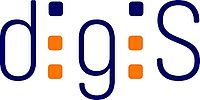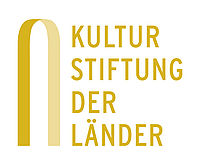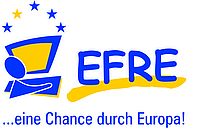Redesign of the Rail Transport exhibition
Funded by the German Lottery Foundation Berlin (DKLB)
The aim of the project is to give the exhibition in Anhalter Bahnhof's historic engine sheds a new, contemporary design. The Rail Transport is one of the museum`s most popular and oldest exhibitions at the museum. The redesign keeps the trademark feature, which is the unique atmosphere of the listed buildings filled with the authentic smell of soot and oil, and develops it further. Instead of presenting the impressive trains and railway objects as technical behemoths, there will be an emphasis on their stories and cultural-historical references in order to make them more approachable and capable of being personally experienced.
With the help of digital technologies, the buildings and exhibits will be enhanced to create a novel, immersive experience. The new exhibition will establish links to relevant contemporary topics such as mobility and sustainability and will reach out to the museum's diverse and international audience. A contemporary exhibition design will offer an exciting, varied and easily accessible exhibition experience while ensuring a welcoming atmosphere and reliable orientation.
Project period: November 2019 until June 2024
Files from the type-cutting department of H. Berthold AG
Funded by the Berlin Senate Department for Culture and Europe
The project "Cut, Paste, Edit - Files of the type-cutting department of H. Berthold AG on design and production" will be carried out from 18.01.2024 to 31.12.2024. The funding is part of the funding programme for the digitization of cultural assets of the Land Berlin.
The aim is to secure evidence of Berlin's typographic culture and make it internationally visible, to advance the digitization of Berlin's typographic cultural heritage and to improve the basis for further research. 78 files from the first half of the 20th century, including letters from type designers, internal documents, proofs and drawings from the H. Berthold AG type-cutting department on the design and production of lead typefaces of various typefaces, will be digitized and made accessible online via the relevant presentation platforms.
The Research and Competence Centre for Digitization Berlin is based at the Zuse Institute Berlin (ZIB) and is funded by the Senate Department for Culture and Social Cohesion.


Colonial History at the Deutsches Technikmuseum
Funded by the state of Berlin’s “Zeitgeschichte und Erinnerungskultur” project fund.
The goal of the project "Colonial History at the Deutsches Technikmuseum – A New Approach to the Prussian-Brandenburg Slave Trade" is to initiate a critical examination of the colonial contexts at the museum through an initial pilot project in the Shipping and Navigation collections. The aim is to develop a clear position on the topic of colonization in the context of one's own institution through differentiated reflection and discussion. Funding will be provided for 12 months starting in April 2020.
The starting point is an exhibition module dealing with the Brandenburg-Prussian slave trade that has since been dismantled. Here, in collaboration with the museums’s project partner „DEKOLONIALE Erinnerungskultur in der Stadt“ and other suitable external experts, a new approach to the issue of colonialism and museums will be developed through the medium of an artistic performance and subsequent workshops. Within that framework, the following questions will be addressed: What responsibility does the Deutsches Technikmuseum (German Museum of Technology) have as regards reappraising colonial contexts? Which objects in the Deutsches Technikmuseum have strong links to colonialism and have their provenances been clarified? How should colonial history be presented in the museum? Who needs to be included in the discussion?
Online publication
Supplementary to the project, the state of Berlin’s “Zeitgeschichte und Erinnerungskultur” project fund is sponsoring a joint publication with the Stadtmuseum Berlin Foundation and the Brücke-Museum. The publication is primarily aimed at museum staffs. It bases its discussion of the issue of colonialism and museums on three practical examples found in the three participating institutions.
Provenance Research
Funded by the German Lost Art Foundation
From May 2019 to May 2020, the pilot project "Identification of Nazi-looted goods in collections of technical history", which was funded by the German Lost Art Foundation, developed a strategy for systematically investigating collection holdings.
Following on from this, a more in-depth examination of the collections was begun in May 2020. The two-year project "Identification of Nazi-looted goods in the collection of the Deutsches Technikmuseum inventoried between 1982 and 1989" is again being funded by the German Lost Art Foundation.
Energy-Efficiency Refurbishment
Funded by the European Fund for Regional Development (EFRE)
Funds provided by BENE (Berlin Program for Sustainable Development), which is supervised by the program executing agency B.&S.U. mbH, will be used to carry out energy-efficiency measures at the Deutsches Technikmuseum between February 2021 and March 2022. Individual components in the areas that include the "old building" (entrance), the engine shed with the middle construction and the Beamtenhaus will be refurbished. The retrofit will cover exterior door and window systems as well as facade glazing. The focus here is on reducing Co2 emissions by optimizing the energy efficiency of the building envelope. The monument protection existing in some areas will be taken into account. The goal: By using the emission and primary energy factors of the program executing agency, the entirety of the measures taken could reduce primary energy consumption by 860 MWh and CO2 emissions by around 165.5 tons annually. The representative for the project's developer and owner is Berliner Immobilien Management GmbH (BIM); the developer/owner is the State of Berlin.
Berlin's typographical cultural heritage in Open Access
Funded by the Senate Department for Culture and Europe
"Making the invisible visible: Berlin's typographical cultural heritage in Open Access" was a joint project of the Erik Spiekermann Foundation gGmbH, the Berlin Art Library – State Museum of Berlin and the Berlin State Library. Funding was be provided from 7.01. until 31.12.2021 as part of the Digitization of Cultural Heritage of the Berlin State funding program.
The goals were to help typography gain more visibility, to advance the digitization of Berlin's typographic cultural heritage, and to expand the basis for further research. Historical printed matter, type specimen books and press proofs were indexed, digitized and made available in Open Access. This layed the foundation for a wide array of outreach activities targeting specific groups.
Anhalter Bahnhof Revisited
The project “Anhalter Bahnhof Revisited” is developed within the framework of the German Federal Cultural Foundation‘s “dive in. Program for Digital Interactions", which is funded by the NEUSTART KULTUR program of the Federal Government Commissioner for Culture and the Media.
Very little of the historic Anhalter Bahnhof building (central station) and its track facilities has survived to the present day. In order to nevertheless make it possible to experience the building along with its associated stories, the “Anhalter Bahnhof Revisited” project plans to bring the historic station back to life through a digital reconstruction incorporating narrative elements.
Via a web app, users will be able to enter a virtual model of the “Anhalter” in its original form. There they can experience an immersive 360° tour. In the app, users can also enter into dialog with historical figures that will relate experiences and stories pertaining to Anhalter Bahnhof.
The basis for the virtual model is a digital reconstruction of the Anhalter Bahnhof created by Architectura Virtualis and the TU Darmstadt as part of a student project. This is to be further developed and its usefulness enhanced through a cooperative effort within the framework of the project.
Experience German in our Museum
Financially supported by the Cultural Foundation of the German Federal States
As part of the Cultural Foundation's pilot project "Sites of Co-Determination. Promoting Social Participation at Museums", Deutsches Technikmuseum is receiving support in its efforts to diversify its visitor base.
By initiating the project "Experience German in our Museum", the Deutsches Technikmuseum and its partner the Service Center of Berlin's Adult Education Centers aim to achieve a common goal: Reaching out to new target groups in order to make them aware of the at-tractive range of existing German language learning materials. As part of the close cooperation with adult education schools, language teachers will be invited to use the museum as an extracurricular learning venue. In addition, new target groups will be reached directly through language, integration and parenting courses. The museum will thus be broadly experienced as an open and accessible place.
The Cultural Foundation of the German Federal States supports this learning process and network development through workshops, consultations and best-practice exchange. In the interchange between all 21 supported museums, knowledge about linking with local networks in order to address the respective new target groups can be consolidated and retained.
Duration: 18 months (expected to start in September 2022)





